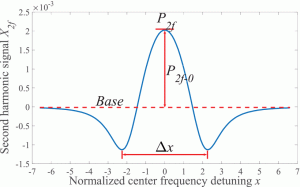July 12, 2022


Finding gas concentrations in industrial and environmental applications requires high precision, high accuracy, and stable temperature control of the laser diode used for the TDLAS. Wavelength Electronics’ laser drivers and temperature controllers enable the sensitive measurements and experiments for concentration inversion models based on second harmonic valley spacing, useful for gas detection in the commercial world. The stability of the laser diode in gas detection is critical, both in current stability of the injection current and the temperature control.
Wavelength’s low noise, high stability laser diode driver and temperature controller, the LDTC0520, can precisely deliver up to 500 mA to the laser and maintain the laser temperature with stability better than 0.005ºC for 1 hour on ambient temperature. It can provide up to ±2.2 A of current to a thermoelectric with both heating and cooling current limits. The PI control loop offers maximum stability while maintaining efficiency. The benefits of the temperature controller can also help narrow linewidth and can ensure the wavelength does not have any unwanted fluctuations. The laser diode’s life and performance are improved by tighter and more precise control of the laser heatsink temperature.
The complete case study is available as CS-LDTC10.

